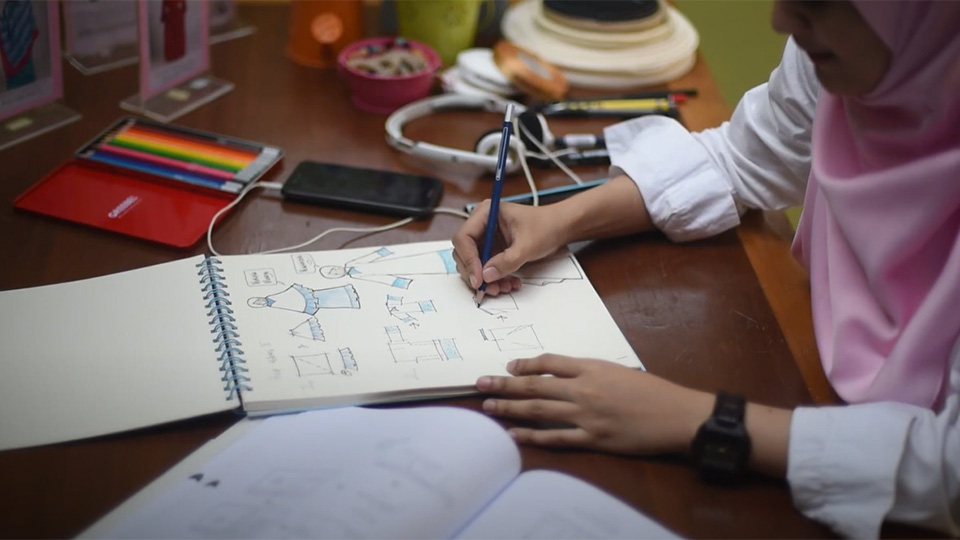Monitoring Buildings and Bridges Heartbeats to Save Lives
Sitting on the Pacific Ring of Fire, an area prone to volcanic eruptions and earthquakes due to plate tectonics under and around the Pacific Ocean, the Philippines records daily tremors. If most remain unnoticed, the country is under the constant threat of a devastating earthquake. Reducing casualties by ensuring buildings and bridges are safe to use after earthquakes has been the aim of a civil engineer who invented the Universal Structural Health Evaluation and Recording System (USHER), recently commended by the Philippine Congress.
Dr. Francis Aldrine Uy, Mapua University’s Dean of the School of Civil, Environmental and Geological Engineering remembers all too well the 7.8 magnitude earthquake that struck the island of Luzon in 1990, claiming thousands of lives. Then 11, helpless and terrified, he lay on the school ground hoping to escape with his life. Destruction was massive. “A strong earthquake is imminent, it not a matter of if, but when,” he said.
Coming from a family of builders, engineering was like second nature for Dr. Uy. He attended Mapua Institute of Technology to study civil engineering and went on to do his Ph.D. at the University of the Philippines in Diliman.
Universal Structural Health Evaluation and Recording System
A Safe & Affordable Structural Assessment method
USHER is composed of an advanced accelerograph, a web portal, and a mobile application. The system allows the monitoring of any structure anywhere, at any time. It can be installed in all types of buildings and structures irrespective of their age, including bridges, and grants users, in particular developers and structural engineers, the ability to remotely monitor and analyze the host structure before, during, and after an earthquake.
The system, which is a cheaper alternative to other imported versions, was developed from 2016 to 2019 at Mapua University, in partnership with the Department of Science and Technology (DoST) and the Philippine Council for Industry, Energy and Emerging Technology Research and Development. USHER Technologies Inc. launched in September 2019 and started operation in February 2020 took over the manufacturing and commercialization of the system. Although the Covid-19 pandemic had a dampening effect on sales, USHER still finished 2020 with a positive balance and saw sales picking up in 2021.
So far, some 160 units have been used or installed in government buildings and bridges, and private buildings. USHER was the recipient of the 2021 Outstanding Technology Commercialization Award delivered by the Philippines National Academy of Science and Technology.

Structural evaluation of buildings - recording and analyzing vibrations
Building Doctors, Preventing Disasters
Passionate about USHER, Dr. Uy explains that the system acts like a heart doctor checking someone with ECG results or a stethoscope and listening for abnormalities or anomalies. Each building has its own heartbeat, unique design, and performance measures. Initially, USHER uses the computer model of the building, and the model is further refined by actual performance and measures recorded by the system. During strong earthquakes, the structural engineers working for USHER analyze the vibration patterns of buildings. If they find significant differences between the baseline data and the patterns during and after the earthquake, the building probably suffered structural damage.
In construction, he explained, there is no way of testing the entire structure. “During an earthquake, people are asked to evacuate buildings, but the next big question is: “is it safe to go back inside?”, he said.
Inspection of Buildings with USHER, Providing Certainty over Building Safety
Before USHER, someone had to go into buildings and try to visually evaluate the state of the beams and internal structures and look for manifestations of structural damage. “We call it a rapid visual inspection. But in reality, in particular, if you are talking about a high rise building, the structural elements are covered, it is almost impossible to make a diagnostic,” he pointed out, adding “the most difficult task is to determine if the sub-structure is stable, underneath the building, the foundation.” All those years “we have been taking that risk.” USHER gives structural engineers an indisputable addition to the conventional way of determining if a building is safe, and could prevent disaster, in particular in the event of aftershocks, according to Dr. Uy.
The technology supports the four-pillar solution for risk reduction: prevention and mitigation, preparedness, response, and rehabilitation.
Mapua University from a Teaching Institution Only to a Research Center
Dr. Uy remembered the time when Mapua University was solely a teaching institution. However, in 2010, the university’s president decided to open the institution to research, leading to high-impact research. One of the first research projects was the Smart Bridge Project, implemented in 2016, to monitor the state of bridges, which was the birthplace of USHER. The first USHER prototype was deployed on a bridge in the City of Manila.
USHER is the first commercialization project of Mapua University since it was founded in 1925. “This is really new for our community, we were writing policies along the way… we were like guinea pigs for this kind of activity,” he recalled, adding that it was a great challenge but the project got a lot of support.
Funding is a key ingredient to launch a startup and a major factor in its potential success. The Department of Science and Technology provided USHER with total funding of almost US$1 million. “It is a huge amount of funding, this is why it is very important for us to do our best to make at least a successful start-up”.
USHER Technologies take center stage during Disaster Resilience Month
The Mapua University filed a patent for USHER in 2017, which is still pending at the intellectual property office. According to the technology transfer Act, the patent rights were given to Mapua University. A business license agreement was subsequently established between Mapua University and USHER Technologies inc., which recently filed a new patent on the method and process of the advanced features of the system.
Equipped with a research and development unit, USHER aims to continuously develop its technology, and file a new patent every year. Every July, which is the Philippines’ disaster resilience month, USHER organizes and hosts several activities to showcase advancement and promote disaster risk reduction technologies.
The USHER Technologies’ R&D unit already provided an innovation for the Covid-19 relief, with a GoClean disinfection chamber in the early days of the pandemic, which was deployed and used mostly in government buildings and hospitals in Quezon City. USHER will also commercialize its HOCLOMAC Technology that produces an alternative solution for disinfection.
Developing USHER into a Multi-Hazard Disaster Risk Reduction Platform
The collapse of a condominium building in Florida in 2021 and the Morandi Bridge in Genoa, Italy in 2018 are stark reminders of the dangers of unstable structures. USHER, Dr. Uy said, is a cost-effective structural health monitoring system, applicable in any critical infrastructure, including dams, towers, and others. The system is not designed only for strong motion detection but detects even micro-vibrations, and can help in heritage preservation.
For the short-term future, USHER Technologies is expecting to become a multi-hazard disaster risk reduction platform not limited to earthquakes. The company is already looking at applications for tall buildings, against strong winds, during typhoons for example. Unluckily, the Philippines also sits on the typhoon belt. The system could also be applied to prevent disasters such as landslides, tsunamis, or to monitor the impact of excavation underneath existing structures when digging for underground rail, or adjacent buildings during construction work.
Preventing natural disasters on a global scale – USHER’s Top Priority

USHER Technologies is open to collaboration and hopes to bring the technology to other countries, especially those affected by the same disaster risks, such as Indonesia, and Japan.
“USHER is something Filipinos can be proud of as it is made in the Philippines and is the only Philippine-made technology of this kind.”
In the next five years, the company wishes to deploy the USHER system in at least 3 other countries abroad and make it the preferred multi-hazard disaster risk reduction platform that would provide end-to-end solutions for better safety and infrastructure resilience.



